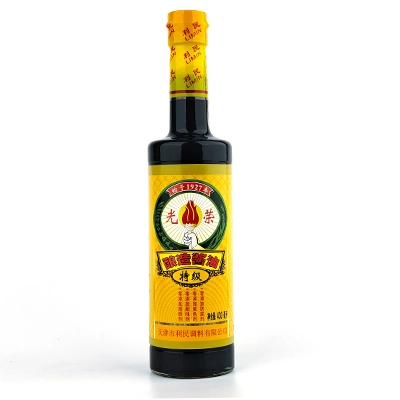When it comes to enhancing the flavors in your dishes, choosing between light soy sauce and dark brown soy sauce can make all the difference. These two soy sauces, while originating from the same soybean base, offer distinct flavors, colors, and applications in cooking. Understanding these differences not only helps you make the best choice for your culinary creations but also broadens your knowledge of traditional Chinese condiments.

Light Soy Sauce Chinese: The Everyday Staple
Light soy sauce is a must-have in every kitchen. It’s known for its light color, but don’t let the name fool you—this sauce is packed with flavor. Made from premium soybeans, often sourced from the Hailun Soybean Base in Northeast China, light soy sauce is naturally brewed and aged to perfection. The fermentation process is meticulously controlled, ensuring the right balance of salty and umami flavors.
This sauce is ideal for dipping, marinating, and seasoning. Its relatively thin consistency allows it to be absorbed easily, making it perfect for dishes where you want the soy sauce flavor to be prominent but not overpowering. Because of its lighter color, light soy sauce Chinese doesn’t darken dishes as much, preserving the natural colors of your ingredients. This makes it a favorite for stir-fries, noodle dishes, and soups.
Dark Brown Soy Sauce: The Rich, Strong Option
On the other hand, dark brown soy sauce is richer, thicker, and more intense in flavor. This soy sauce is brewed for a longer period, often combined with caramel or molasses, which gives it its characteristic deep color and slightly sweet aftertaste. The dark brown soy sauce is perfect for braising, stewing, or adding to dishes that require a more profound and robust flavor profile.
The thickness of dark brown soy sauce also means it clings well to ingredients, making it a fantastic choice for dishes where you want a glossy, rich coating, like in Chinese red-cooked pork or soy-braised chicken. The added sweetness balances out the saltiness, giving your dishes a complex flavor that develops over time.
Salted Soybean Sauce: The Hidden Gem
If you’re looking to try something different, consider salted soybean sauce. This sauce is made from fermented soybeans, offering a chunky texture and a deep, savory taste that’s perfect for adding umami to your dishes. Unlike the smooth consistency of light and dark soy sauces, salted soybean sauce adds a bit of bite to your dishes, making it ideal for use in stir-fries or as a condiment.
This sauce is particularly popular in regional Chinese cooking, where it’s used to add depth to simple ingredients. Whether you’re stir-frying vegetables or preparing a hearty meat dish, salted soybean sauce can elevate your cooking with its unique flavor and texture.
Why Choose Our Products?
As a soy sauce manufacturer with a history dating back to 1927, we’ve perfected the art of soy sauce brewing. Our soy sauces, including light soy sauce, dark brown soy sauce, and salted soybean sauce, are made using traditional fermentation methods combined with modern technology. This ensures that each bottle is rich in flavor, free from chemical additives, and made from non-GMO soybeans sourced from our own bases.
We offer OEM & ODM services and wholesale options, catering to the specific needs of our customers worldwide. Whether you’re a local wholesaler or a supplier looking for high-quality soy sauce, we can customize our products to meet your demands. From small retail packaging to bulk orders, we can create exactly what you need.
For detailed quotes, pricing, or more information on how our products can fit your culinary needs, don’t hesitate to contact us. We welcome inquiries from wholesalers and suppliers globally. Reach out to us at chengliu0913@163.com, and let’s bring the authentic taste of traditional Chinese soy sauce to your table.
Our commitment to quality and our extensive history in the industry make us a trusted partner for your soy sauce needs. Choose our products for their exceptional flavor, versatility, and the assurance of a brand that has stood the test of time.

